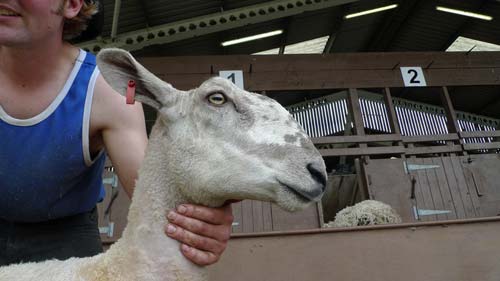It Always Rains On ‘Show Days’
There is a tradition that it always rains on ‘show days’ and sure enough it started raining heavily as we approached the showground of the Great Yorkshire Show that is held in Harrogate in the north of England in July each year.

The Great Yorkshire Show is the largest agricultural show in England and, as we drove in and were guided by the stewards past fields full of parked cars, we envisaged a long and muddy tramp ahead of us from the car to the entrance gate to the show.
We parked and sat and waited out the rain. Through the steamed-up windows we sat and watched the comings and goings, trying to work out which way to walk to the showground.
As well as looking forward to enjoying the show, we were looking for opportunities to take photographs for the Animals category of our ecard collection. Consequently, the prospect of rain the whole afternoon was not what we had hoped for.
Then the rain stopped and the sun came out between banks of white clouds and we walked through the fields, dodging the puddles until we reached the track that led to the show.
Although the sky grew dark and threatening again during the afternoon – as you can see in the photograph above – it didn’t rain.
This sense of keeping one eye out for the unreliable weather is a facet of England that everybody learns to live with. It’s one of the jokes about the social interactions of the English that the first and most regular topic of conversation is the weather.
An Oddity
Agricultural shows are a long-standing tradition in England. They take place at various towns up and down the country, mostly in the summer months.
Yet these shows are an oddity in some ways. If a visitor from another planet were dropped into the Great Yorkshire Show, he might come away thinking that England was a country where everyone was involved in farming.
The fact is though, that the overwhelming majority of the people who attend the shows are urban dwellers because England is of course an urban society. It ceased being a network of rural communities generations ago
Yet going to these shows is like stepping into a parallel world of people who live and work in the English countryside, as though we rub shoulders with them every day.
Farmers And Their Animals
The English countryside is beautiful, but it is not quaint. English farms are amongst the most highly efficient and mechanised in the world.
Because of this mechanisation and efficiency there is a tendency to think that farmers regard their animals as ‘produce’ rather than as individuals. It is obvious however from watching the farmers at the shows that they have a caring relationship with their animals.
That was brought out very forcibly during the epidemic of foot and mouth (FMD) disease of 2001 when hundreds of thousands of cattle and sheep were buried in mass graves or incinerated under government orders to try to contain the outbreak. There were interviews on television then with farmers who were crying at the loss of their animals.
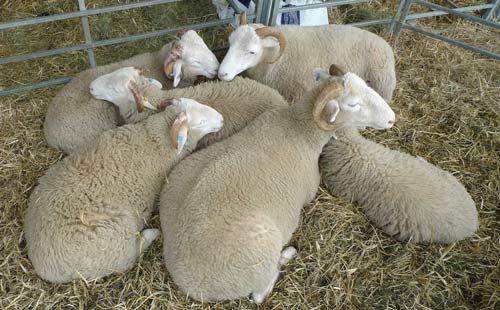
Foot And Mouth Disease
The evidence suggests that the outbreak in 2001 began when pigs were fed catering swill that contained illegally imported meat that was infected with the FMD virus.
FMD is an airborne virus. Pigs are relatively resistant to infection this way, but having eaten the swill they became ‘virus factories’ pumping out plumes of the virus into the air where it then spread to cows and sheep.
In the acute stage, the symptoms are blistering around the feet and mouth. Animals rarely die from the disease but the long-term effect is that they don’t regain full health and they are often in pain. Therefore the disease is a risk both to the welfare of the animal and to the farming economy.
At the time of the outbreak, many farms were off limits to visitors. Nor were the animals permitted to leave the farms. We remember visiting farms outside the known areas of contamination and driving and walking through shallow troughs of disinfectant that were set across the entrance to farms. Everyone entering and leaving had to walk or drive through these troughs.
2007 Outbreak
There was another outbreak of FMD in 2007, but by then the lessons of the earlier outbreak had been learned and the outbreak was contained in the south east of England and stopped.
There were no disinfectant troughs at the Yorkshire Show and if there had been a reported outbreak this year, I do not think the Great Yorkshire Show would have taken place.
The Main Event
It is farm animals that dominate the events at agricultural shows, and showing animals and winning rosettes is a serious business. This is so whether it is for cows, pigs, or any other farm animals.
However, we spent most of our time looking at the sheep, taking photographs for our ecards, and in talking to the sheep farmers.
Sheep
There are over 40 million sheep in the United Kingdom, which in a population of 60 million people means that one doesn’t have to travel far to see sheep in the fields.
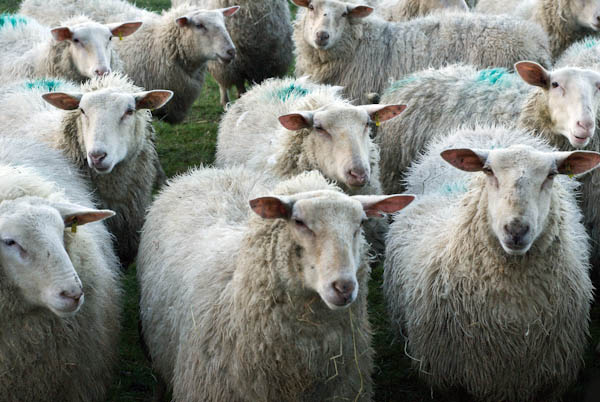
About 50 per cent of the flocks are from the hill regions of Scotland, Wales, and the Lake District. They are cross-bred each year with upland sheep who are then bred with lowland sheep to encourage the best genetic mix.
That is why there are 70 breeds of sheep and a further 12 recognised crosses in the UK living everywhere from the harsh, hill areas in the north to the lowland ‘downs’ or valleys near the south coast.
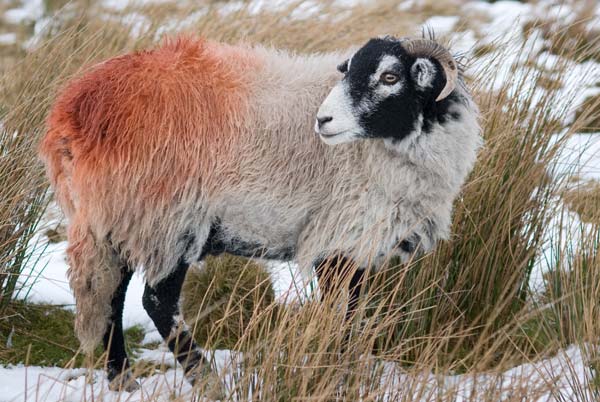
Lamb
If you are wondering where the lamb that reaches British tables comes from, it is the male cross-bred lambs that are taken off to market at about three months old.
When they have been taken away, it’s eerie and poignant to travel past a field that was full of sheep a few days before and now see only the mother ewes.
Benefits And Dangers
While cross-breeding helps maintain the health of sheep, transporting sheep to different parts of the country at breeding season was cited as one of the reasons that the foot and mouth epidemic spread so quickly throughout Britain.
Breeds
Some of the breeds of sheep have delightful names and wonderful appearances to go with the names. For example, at the show we saw the Leicester Longwool breed of sheep that has long strings of delicate, silky curls that stretch like beaded curtains to the ground all along its body.
Then there is the Hampshire Down breed, with short legs, short muzzles, and a characteristic chubbiness – as you can see in this photo.
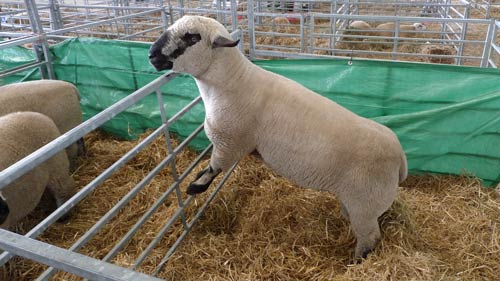
We have seen the Herdwick breed of sheep many times. This is the breed that was saved for the nation by Beatrix Potter on her farms in the Lake District.
These hardy hill sheep and other similar breeds like the Blackface and the Swaledale are a the top of the cross-breeding chain. They are crossed with Upland sheep like the Border Leicester which produces mules or half-breeds that are then crossed with the lowland breeds like the Lincoln Longwool and the Hampshire Down.
For the first time, however, we saw Herdwick sheep that had recently been shorn. Then we were able to see that they have long, elegant necks that are normally hidden by a coarse grey and white fleece or jacket as farmers sometimes call the fleece.
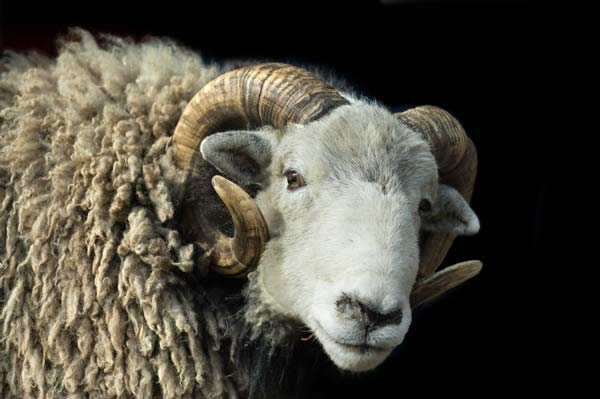
Talking to a farmer who farms in the Lake District he told us that he knows the face of each one of his flock of Herdwicks.
When six of his sheep were stolen earlier this year, he knew immediately which six faces were missing.
Sheep Shearing Exhibition
At intervals throughout the day two sheep shearers put on an exhibition of sheep shearing. One sheared used electric clippers while the other used hand shears.
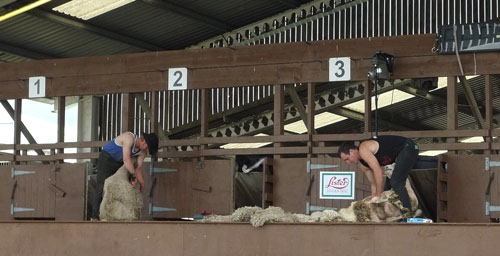
The commentator explained that all shearers know how to use hand shears because they travel the world with their trade and sometimes they are called upon to work far from a source of electricity.
As we have seen before, such as when we visited Masham Sheep Fair, shearers wear short felt bootees to prevent themselves sliding about on the floor when it becomes covered in lanolin from the fleeces.
Of course the electric clippers worked much faster than the hand shears, but it was amazing how quickly the shearer with the hand shears clipped the fleece off an animal.
In fact the whole business was over so quickly that the shorn sheep looked as though they were unsure what had just happened.
